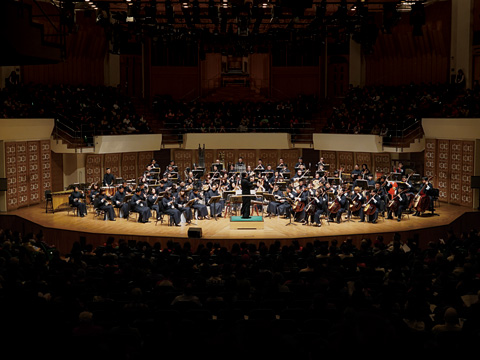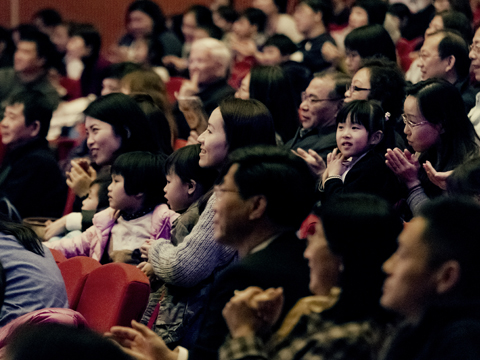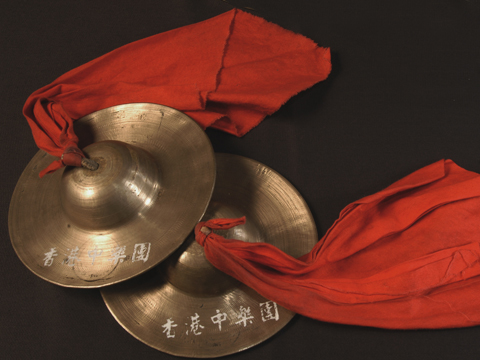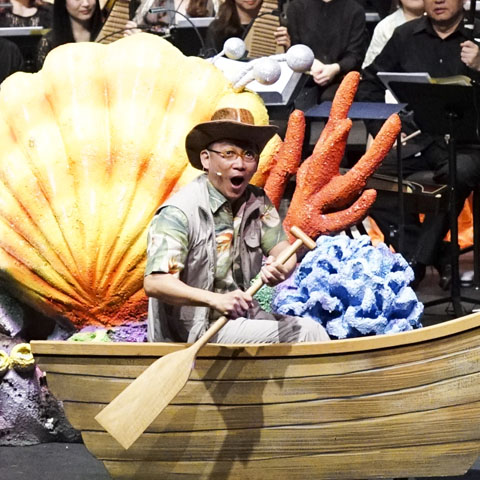
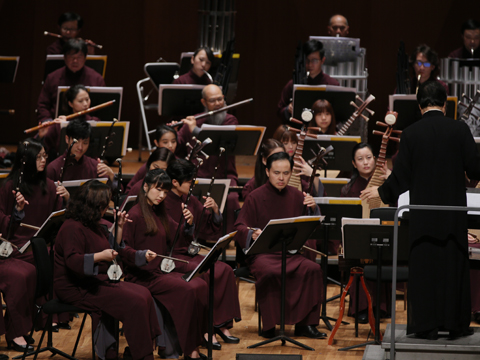
HKCO
Hong Kong Chinese Orchestra Orchestra Members Artistic Director and Principal Conductor for Life Council Advisors & Artistic Advisors Council Members Management Team Vacancy Contact Us (Tel: 3185 1600)

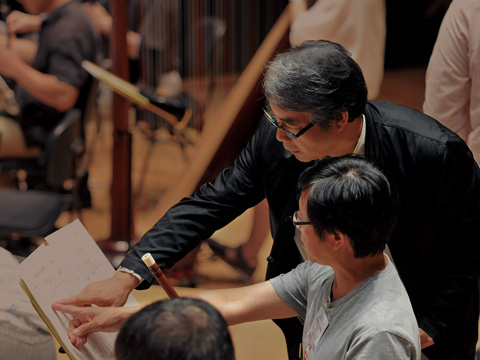
What's On

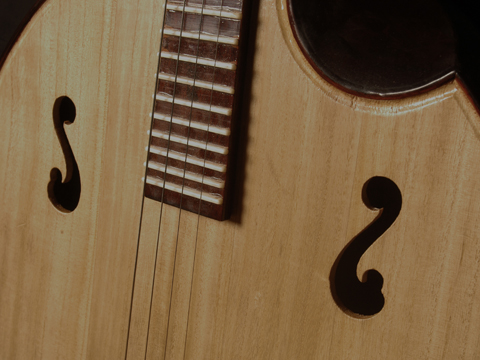
Education
The HKCO Orchestral Academy Hong Kong Youth Zheng Ensemble Hong Kong Young Chinese Orchestra Music Courses Chinese Music Conducting 賽馬會中國音樂教育及推廣計劃 Chinese Music Talent Training Scheme HKJC Chinese Music 360 The International Drum Graded Exam

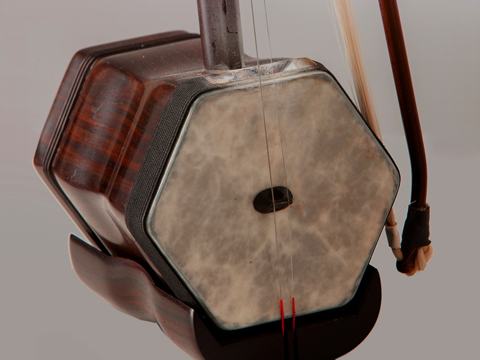
Instrument R&D
Eco-Huqins Chinese Instruments Standard Orchestra Instrument Range Chart and Page Format of the Full Score Configuration of the Orchestra
41st Orchestral Season
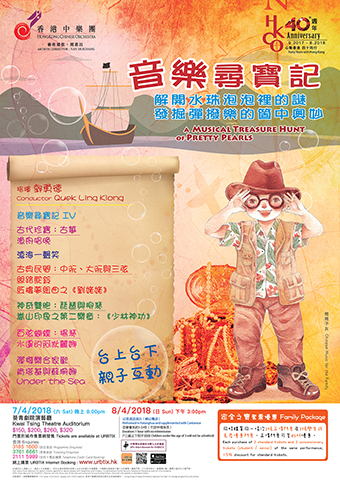
A Musical Treasure Hunt of Pretty Pearls
8/4/2018 (Sunday) 3:00 pm
Duration: 1 hour with no intermission
*Children under the age of 3 will not be admitted
Family Package
Pick up pearls on a musical adventure of plucked-string notes
In ‘A Musical Treasure Hunt’ in 2016, the highly versatile Quek Ling Kiong, Resident Conductor of the Singapore Chinese Orchestra, led a young audience on a screamingly funny musical adventure. He is returning by popular demand this season to take children and their adults on another journey to ‘pick’ the pearly bubbles in plucked-string music. A mystery that would be fun to unfold!
A Musical Adventure IV Tan Kah Yong
Written as the theme song for the Ministry of Education (MOE) Chinese Orchestra Music Camp 2009, A Musical Adventure depicts the composer's journey of music education. It begins with a 'magical' phase where every musical note, chord, terms etc. that is introduced to the composer is a magical discovery to him. As the music lessons progressed into higher levels, the composer found them more and more difficult and challenging, very often having to endure hardship to be able to master the more complicated teachings that were taught. Persistence and perseverance lead the composer out of the complications to attain a certain level of musical competency. The piece is deliberately ended with a minor 9th chord to give an incomplete feel, denoting that music education is a continuous and never ending process.
A. Gems from the Ancient Times: Zheng
Zheng solo
Song of the Homebound Fishermen Ancient Melody Arr. by Liu Bin
Song of the Homebound Fisherman has been the most popular zheng piece since the 1930s. Its tunefulness enhances the picturesque scene of fishing boats returning after a bumper catch. The second half develops along the rising-falling pattern, which is a vivid depiction of the returning fleet on the sea. Its lyricism has made the music a classic in the zheng repertory.
Tutti
Laughter on the Sea Music and Lyrics by James Wong Arr. by Phoon Yew-tien
This is an arrangement for Chinese orchestra based on the song of the same title scored for the film, Swordsman. The lyrics may well be regarded as an expression of the composer’s life experiences.
B. Folk Music and Classics: Zhongruan and Sanxian
Zhongruan, Daruan and Orchestra
Camel Bells on the Silk Road Ning Yong Adapted by Zhou Yuguo
The music exudes the unique features of folk songs of the Xinjiang region. It describes the journey of a camel train on the ancient Silk Road – the natural scenery along the way, the emotions of the riders, and the sound of the camel bells approaching. As they make a stop in the desert, the travelers decide to dance a while to dispel the fatigue and boredom of the long, arduous journey through the sands. Revived after the rest, they continue their way…
Grannie Liu (Excerpt from The Dream of the Red Chamber Suite) Wang Liping
This is adapted from the soundtrack music to the television drama series, The Dream of the Red Chamber. In
forming this suite, the composer has selected some of the highlights of the story and narrated each scene through telling emotions in the music. A muted tone permeates throughout, as the composer wishes to maintain the same mood without incorporating the much richer dynamics of a full orchestra. In describing festivity and celebrations, the composer also uses a traditional touch while never losing track of the exuberant spirit of folk music. Quaint, elegant and delicate - the mood is in keeping with the general atmosphere of both the music and its original story.
There are eight sections to the Suite:
1. The Red Chamber Lament;
2. The Song of Qingwen;
3. The Funeral Procession;
4. Grannie Liu;
5. The Love between Baoyu and Daiyu;
6. The Lantern Festival;
7. Dear Ones Parted;
8. Burying the Flowers
The programme for this concert features the fourth movement Grannie Liu:
Grannie Liu
This section opens with fine orchestration, with the dasanxian leading the way. The witty and funny mood comes through vividly, particularly in the section where the xiaotangluo and the glissandi of the sanxian are in dialogue.
Liuqin and Pipa Duet
The Amazing Martial Art of Shaolin (Excerpt from the second movement of Impressions of Songshan) Wang Huiran and Wang Hongyi
The music was inspired by the folk music of Henan, and is a showcase of virtuosity for the players of xiaoruan and pipa. It distinguishes itself with an elegance in taste and uniqueness in style.
The first movement: Images of Songshan
It is a description of the lofty mountain and the historical charm of the Shaolin Monastery, which have the effect of arousing people’s feeling of warmth and love towards their native land as well as respect for heroes down the history of time.
The second movement: The Amazing Martial Art of Shaolin
The music requires the playing techniques of virtuosi as it depicts the martial prowess of the Shaolin monks - dubbed ‘the non-pareil kung fu masters’- through descriptions of their physical training sessions, fighting routines and fierce chases. The elements of humour, excitement and thrill add refreshing touches to the music.
*Only the second movement is performed in this concert.
Yangqin Solo
Ballade Pour Adeline Paul de Senneville and Olivier Toussaint Adapted by Qu Jianqing
The name ‘Adeline’ has its origin in Greek mythology. This piece is an adaptation of Ballade pour Adeline, composed by Paul de Senneville in 1976, and was released as a recording by the famous French record producer, Olivier Toussaint. The reference to ‘Adeline’ in the title shows the composer’s concept of beauty in the most ideal form. In 1990, Richard Clayderman won the world’s only Gold Piano Award with Toussaint’s adaptation of the piece. The present version for yangqin is transcribed by Qu Jianqing, a yangqin virtuoso, from the piano version, and exudes a refreshingly different appeal.
E. The Entire Plucked-strings Family in Action
Kentucky and Susanna A medley based on American folk songs Arr. by Peng Xiuwen
This arrangement for Chinese orchestra is a medley of two famous American folk songs by Stephen Foster. The first half is based on My Old Kentucky Home, Good-Night (now commonly known as My Old Kentucky Home), the lyrics of which describe a negro slave recalling his beautiful native soil as he knows he is going to be sold again after working on different plantations. The melodiousness has a soft, touching appeal. Then the mood changes in the second half with the lively, rhythmic O Susanna. It offers a stark contrast to the first. Only O Susanna will be performed by the HKCO in this concert.
Under The Sea (from animated film The Little Mermaid) Alan Menken Adapted by Dayn Ng Chee Yao
This is an adaptation of a song from the Disney animated film, The Little Mermaid, for Chinese orchestra.
The lively rhythm and jingle-like melody create vivid, colourful scenes of the world under the sea.
Telling a Story with Plucked-string Musical Instruments
Chow Fan-fu
The distinguished feature of this concert is that it does the storytelling through plucked-string musical instruments. The Chinese title of the story is in itself a bit of a thrill, with ‘treasure’ to be hunted, and ‘riddles’ to be solved. It is often true that there is always a motive behind every story told, so in the same vein, this concert also deploys the two-pronged means of story-telling through plucked-string instruments to an end. Quek Ling Kiong, Resident Conductor of the Singapore Chinese Orchestra, in the introduction to this concert helmed by him, states that he will “take children and their adults on another journey to ‘pick’ the pearly bubbles in plucked-string music. A mystery that would be fun to unfold!” In other words, the ‘end’ is to educate through music – that of the plucked-strings in particular – and the ‘means’ is livened up with treasure hunts and solving riddles.
It is not uncommon that composers write their music with the purpose of telling a story, as one can see from tonight’s programme that, except for the few that have been commissioned for the purpose, many pieces are familiar to a lot of ears. What sets this concert apart from the others is the use of plucked-string instruments. Those which have been picked for solo are all unique and charismatic in tonal quality and timbre, such as the pipa, zheng, sanxian, liuqin, zhongruan and yangqin. In contrast to the Western philharmonic orchestra, where almost all plucked instruments have been dropped except for the harp, the presence and range of this family in Chinese orchestral music is striking. Why is that the case? Perhaps the answer lies in the ‘adventures’ to be told in this concert.
Plucked-strings differ from other instruments in that the strings are plucked in forward and backward motions with fingers, acrylic nails or the plectrum. For some, the strings are struck with mallets or sticks to produce granular notes. Different tones and timbres are produced by plucking (or striking) the strings at different pitch positions of the instrument, varying the strength of the finger movements, and changing the positions of the strings being pressed down. Also, differences in material of the plectrums and sticks, different compositional techniques used by the composer, and differences in performing style all contribute to the making of varied musical images. These images depict the characters in the story, develop the plot, create different scenes, and even enhance the emotional impact of the story with vivid portrayal of the storyline.
In the process, whether the story can engage the interest of the audience depends on how the story-telling is mapped out, and whether the performers can produce the composer’s intended effects and the emotion of the music. Other elements also come into play: for this narrative experience, one crucial contributing factor is the conductor Quek Ling Kiong, who controls plot development and the details of the story.
Having said that, we must admit, after all, whether a story can captivate the sole attention of the listener depends on its appeal. A good story is also often imbued with ‘undertones’ – which, in Chinese, can be translated literally as ‘something beyond the notes coming from the strings’. Concentrating on the story would not only help one gain a deeper understanding of the plucked-string instruments and their subtleties, but also reward one with the realization of such ‘undertones’. They may enlighten one’s outlook on life, elevate one to find new vistas, and open up new horizons in one’s life experiences.
Your Support
Friends of HKCO
Copyright © 2024 HKCO
